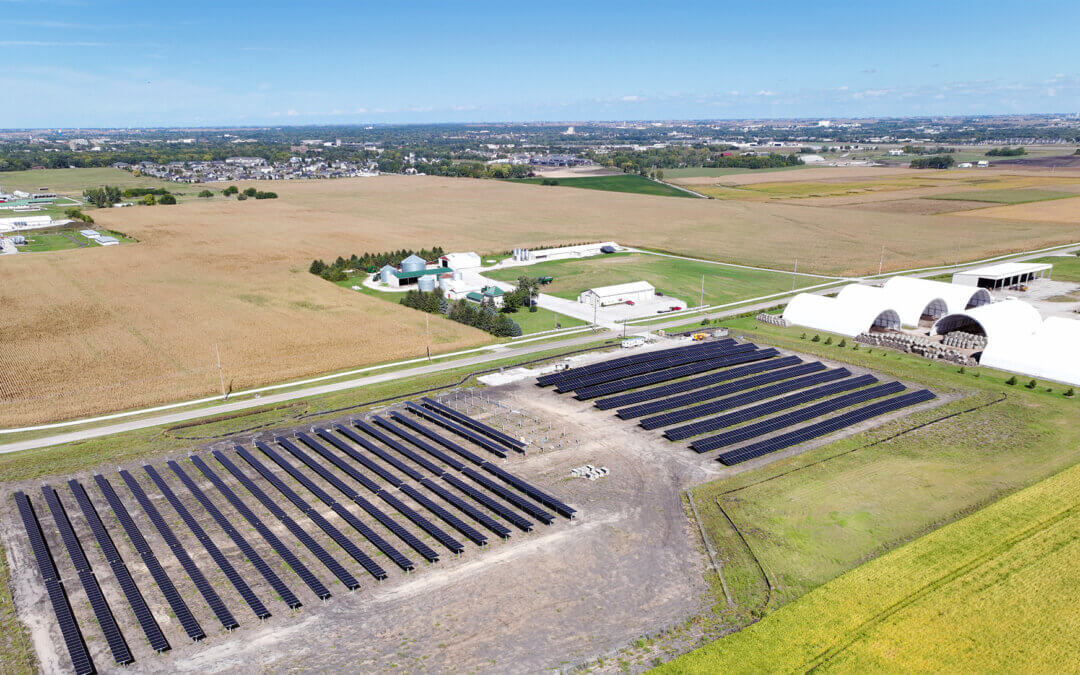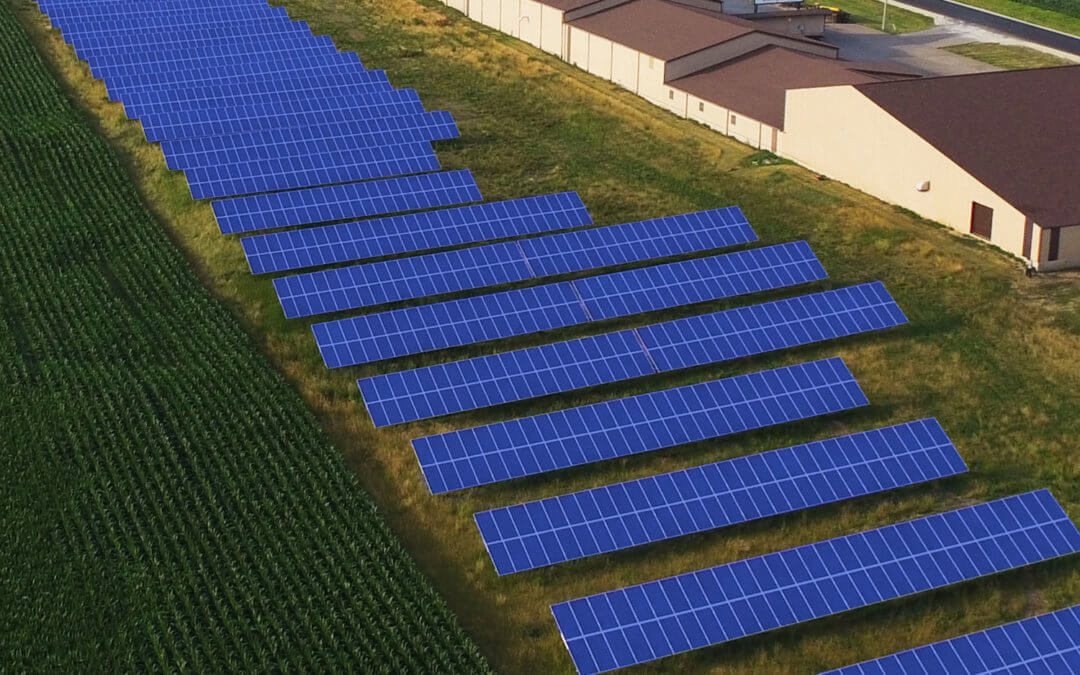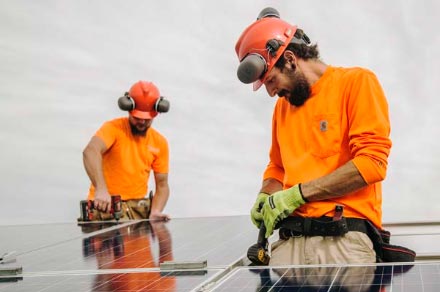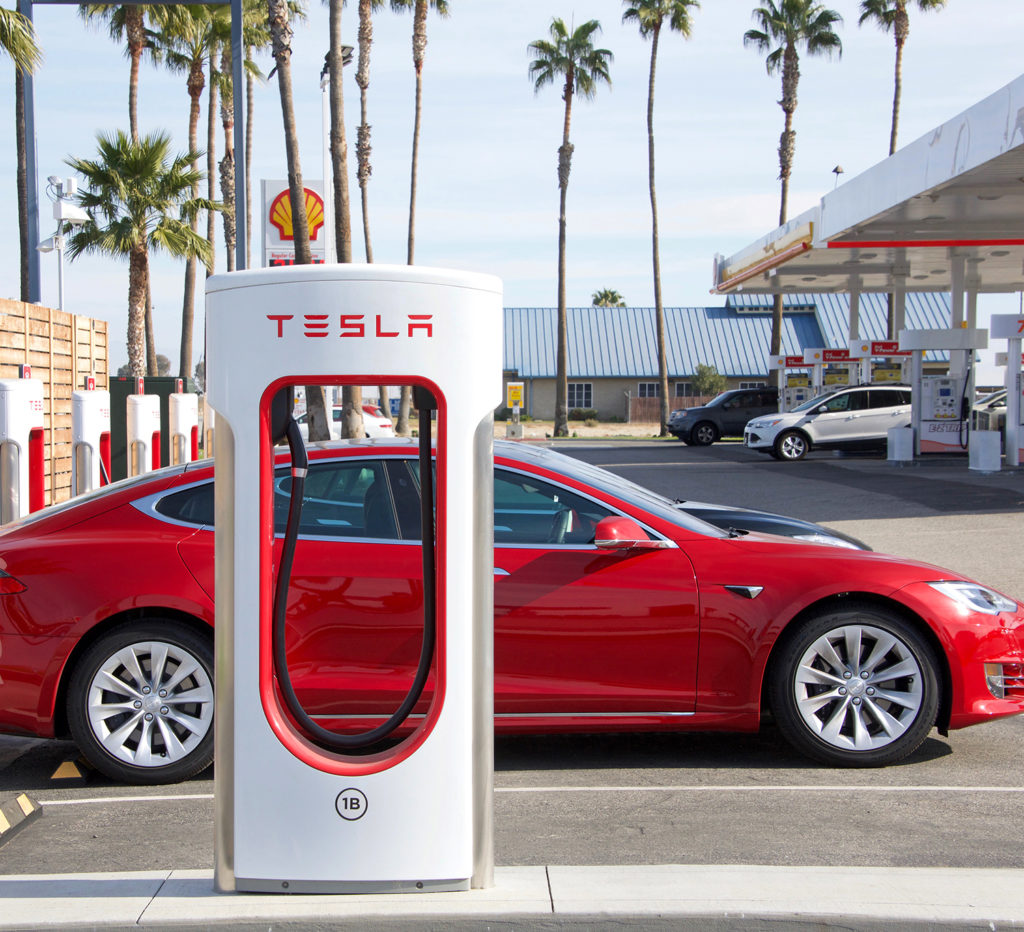How net metering changes affect solar for Alliant Energy customers
By: Deniz Comez, Lead Designer, Ideal Energy
In March we published Changes Coming to Solar Net Metering: Inside the Technical Calculations to walk our readers through the math behind our assessment of the impact of the new net metering rules in Iowa. Since that post was published there have been some updates, as the new tariff has come into effect.
Overview
Although the Iowa Utilities Board (IUB) refused to reconsider its ruling, it did compel Alliant Energy to modify some aspects of the new net metering rules. These changes have lessened the severity of the reduction to net metering. This means solar is still viable for most customers.
Although we’re disappointed that Alliant Energy and the IUB have enacted new rules unfriendly to businesses and homeowners pursuing solar, we’re relieved that the impact won’t be as severe as it could have been.
But before we dive into the specifics, let’s get caught up on the background.
Background & Timeline
In July 2016, the Iowa Utilities Board instructed Iowa’s utilities to submit new net metering rules for consideration as part of a pilot project meant to expand solar power distributed generation in the state. In February 2017, the IUB accepted Alliant Energy’s proposal. Alliant’s proposed rules limit the size of new solar installations by introducing a load cap to net metering.
Calculations based on Alliant’s publicly filed data showed that the new rules reduced the viable size of solar installations by 62% for Residential customers and 68% for General Service customers compared to what would have been installed under the old net metering rules. For an in-depth discussion of the impacts of Alliant’s proposal see our previous post here.
Leaders in the solar industry, environmental organizations, and concerned citizens roundly criticized Alliant’s proposal. Although the IUB did not reconsider its ruling, these efforts were not all in vain. In March the IUB issued a ruling that required Alliant Energy to provide additional information and to make several changes to its proposal.
Alliant made those changes and the new, final rules went into effect on May 1st.
What changed under the revised rules?
The IUB ordered Alliant Energy to provide additional information about the class load data that the net metering load caps are based on. Furthermore, under direction from the IUB, Alliant now defines it’s load caps in terms of alternating current (AC) instead of direct current (DC), which we view as a positive change.
Class load data includes total kWh usage and non-coincident kW demand for all Alliant customers in a particular class, for example the “Residential” class or the “General Service” (commercial) class. This is important for calculating the net metering load cap, because although Alliant would prefer to use an individual customer’s actual kW demand, most customer’s electricity meters don’t measure demand. Instead, Alliant plans to infer a customer’s kW demand from the class load data.
Calculations using Alliant’s newly released class load data show that the net metering load caps won’t be as extreme as the older data had indicated.
We now calculate that net metering will be reduced by 17% for Residential customers and 34% for General Service (commercial) customers. For both cases, the Residential and General Service customers, assume the industry-standard solar generation rate of 1200 kWh for every kW DC of solar installed and the solar installation would have a 1.15 DC to AC ratio.
Although this is not the catastrophe that a 62-68% reduction would have been, we are nevertheless frustrated and disappointed that the IUB and Alliant Energy turned a pilot project meant to promote solar power into a new set of rules that will instead limit solar power. Let’s take a closer look at the math behind these net metering reductions.
Work with an Ideal Energy expert to discover how the new net metering rules affect you and make a plan for energy independence.
Residential net metering reduction calculations

OLD SOLAR NET METERING TARIFF
Under the old rules, a typical Iowa household using about 12,000 kWh of electricity per year could purchase a 10.88 kW solar installation that would save the family $1,509 in the first year and pay for itself completely within 9-10 years. The design lifecycle of solar is 25 years.

NEW SOLAR NET METERING TARIFF
Under the new tariff, 7.234kW AC of the same 10 kW installation is eligible for net metering with Alliant Energy, saves $1,353 in the first year, and takes 10-11 years to pay for itself. The design lifecycle of solar is 25 years.
A Residential customer that uses 12,000kWh in a year would need approximately 8.696kW AC to be net metered under the old rules to have 100% of their energy usage net-metered. This is calculated like so:
Given that the Load Factor for Residential customers Load Factor is now 18.937%, under the new rules, the client can have the Load Cap of:

General service net metering reduction calculations
A General Service customer that uses 120,000kWh in a year would need approximately 86.957kW AC to be net metered under the old rules to have 100% of their energy usage net-metered. This is calculated like so:

Given that the Load Factor for General Service customers Load Factor is now 23.855%, under the new rules, the client can have the Load Cap of:


OLD SOLAR NET METERING TARIFF
Under the old rules, an Iowa business using 120,000 kWh of electricity per year could install a solar project with 105.4 kW DC of solar panels and 86.6kW AC of inverters, which would save the business $14,065 in the first year and pay for itself completely within 4-6 years. The design lifecycle of solar is 25 years.

NEW SOLAR NET METERING TARIFF
Under the new rules, 57.425 kW AC of the same 86.6kW AC installation is eligible for net metering, saves the business $13,105 in the first year and takes 5-6 years to pay for itself. The design lifecycle of solar is 25 years.
Final thoughts on the new ruling
- These new metering rules don’t spell the end of solar power in Iowa. While the rules represent a step backward, solar nevertheless continues to be a prosperous opportunity for many Alliant customers.
- If you are an Alliant Energy customer and already have solar, no worries, you’re grandfathered in under the old tariff through your interconnection agreement.
- The outlook is especially good for customers of MidAmerican Energy, another large public utility in Iowa. MidAmerican has implemented new rules that support and encourage solar power. We think they’re moving in the right direction.
- If you’d like to know more about how these net metering changes affect your plans to pursue solar, don’t hesitate to get in touch.
Get specific answers about how these net metering changes affect your plans to pursue solar.
ADDITIONAL INFORMATION
What is Net Metering?
Net metering is a billing mechanism that credits solar energy system owners for the electricity they add to the grid. For example, if a residential customer has a PV system on the home’s rooftop, it may generate more electricity than the home uses during daylight hours. If the home is net-metered, the electricity meter will run backwards to provide a credit against what electricity is consumed at night or other periods where the home’s electricity use exceeds the system’s output. Customers are only billed for their “net” energy use. On average, only 20-40% of a solar energy system’s output ever goes into the grid. Exported solar electricity serves nearby customers’ loads.
What is Load Factor?
In electrical engineering the load factor is defined as the average load divided by the peak load in a specified time period.
What is Distributed Generation?
Distributed generation (DG) refers to electricity that is produced at or near the point where it is used. Distributed solar energy can be located on rooftops or ground-mounted, and is typically connected to the local utility distribution grid. States, cities and towns are experimenting with policies to encourage distributed solar to offset peak electricity demand and stabilize the local grid.
Source: SEIA
What is the Iowa Utilities Board?
The Iowa Utilities Board (IUB) is a public commission that regulates power, water, and telecommunications in Iowa. The three members of the board are appointed to six year terms by the Governor.
What is Alliant Energy?
Alliant Energy is the public utility holding company of Interstate Power and Light, one of the utilities in the state of Iowa. Most Iowans get their electricity from Interstate Power and Light, MidAmerican, or one of the rural electric cooperatives. Most solar installations in the state until now have been among Alliant Energy customers.
More posts about solar policy

Ideal Energy Designs Groundbreaking ‘Agrivoltaics’ Solar Array alongside Iowa State University Scientists
NEWS & PRESS RELEASES Ideal Energy Designs Groundbreaking ‘Agrivoltaics’ Solar Array alongside Iowa State University Scientists DES MOINES, IA (October 19th, 2023) – In a pioneering initiative, Iowa State University (ISU) is embarking on a research project to explore...

A Win for Solar Panels
The White House recently announced it would implement a two-year freeze on new solar panel tariffs. In addition, the Biden administration will deploy the Defense Production Act to increase domestic solar panel manufacturing.










